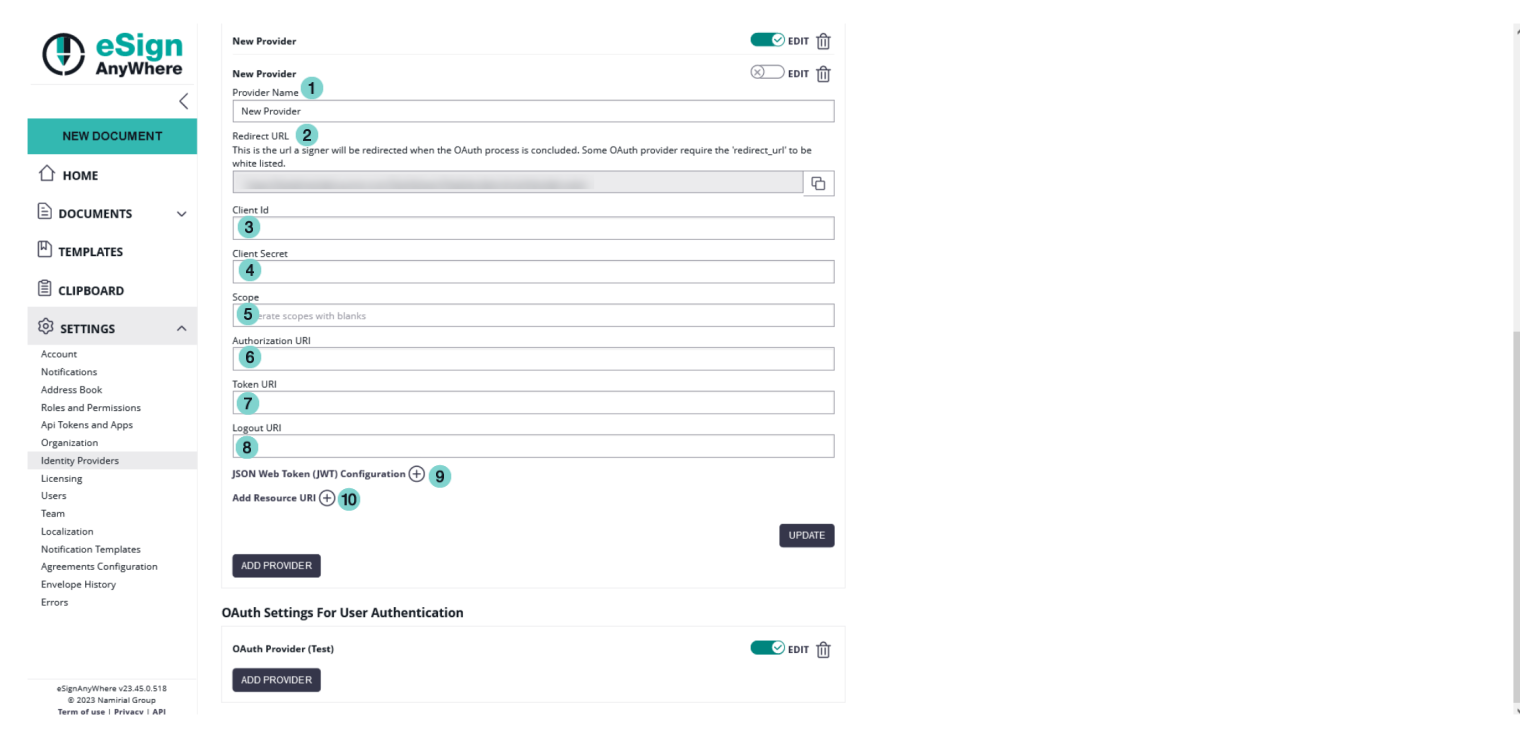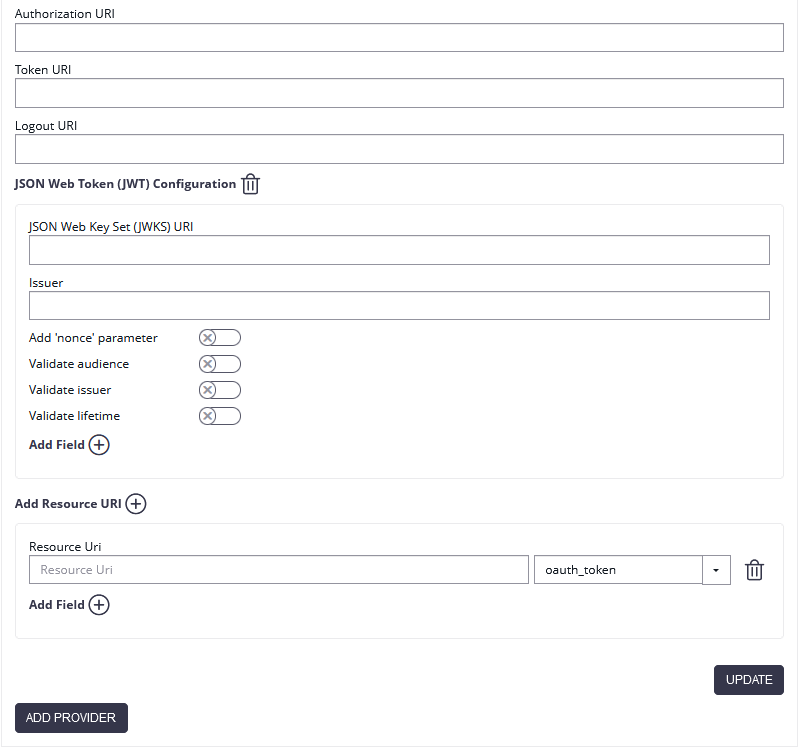...
On the first figure you can find the settings for the signer authentication. If you have configured and enabled the provider, you can then force the signer to authenticate before signing. For the signer authentication, we allow configuring 2 different options: an OAuth 2.0 Authorization Code flow (RFC 6749, Chapter 4.1) where one or several resource URIs are contacted to retrieve identification information, or the OpenID Connect (OIDC) compliant retrieval of a JWT token containing the identification data already. Choose the method offered by your identity provider.
| Figure | Desciption |
|---|---|
|
...
Beside using the resource URI to retrieve identification data, you could also use the resource URI to check (or document in the audit trail) e.g. product version information, in case such is provided. Below you find an example where a /license endpoint provides the product version information.
Data Mappings
...
For more information about the configuration please see the OAuth2 settings for signer authentication above. The settings for the user authentication are equal to settings of the signer authentication.
After configuration add the new provider to a user. You can either add the provider for users in the users setting or you can add the provider in the account setting. Please see the next two figures for more information:
...


